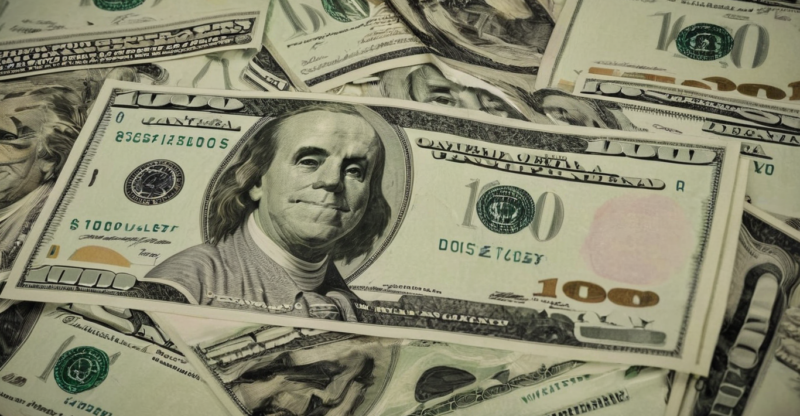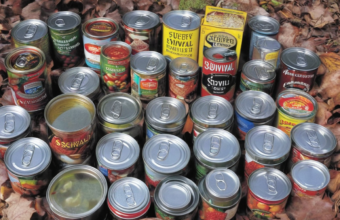Do you really need to stack silver and gold? – A Wealth Preservation Strategy
“In the realm of investment and wealth preservation, the question often arises: Do you really need to stack silver and gold? This query, simple yet profound, holds the potential to reshape your financial trajectory.
Delving into the world of precious metals can be a daunting prospect. Yet, it’s a journey that promises to deepen your understanding of wealth, stability, and economic resilience.
Join us as we explore the allure of silver and gold, their role in safeguarding your wealth, and the practicalities of stacking these timeless treasures. We’ll help you navigate the complexities and debunk the myths surrounding this age-old practice.
Embarking on this exploration, you’ll discover the true value of silver and gold, beyond their glittering exterior. So, do you really need to stack silver and gold? Let’s find out together.
Why Stack Silver and Gold?
Stacking silver and gold is a strategy adopted by many investors to safeguard their wealth. The allure of these precious metals lies in their inherent value, which is unaffected by inflation or economic downturns. Gold and silver have been a reliable store of value for centuries, providing a sense of security in turbulent times.
Investors stack silver and gold to diversify their investment portfolios. While stocks and bonds are subject to market fluctuations, gold and silver tend to move independently of the stock market, providing a buffer against losses. This makes them an excellent choice for risk management.
One of the primary reasons to stack silver and gold is their liquidity. These precious metals can be sold almost anywhere in the world, making them a versatile asset.
• Gold is universally accepted and can easily be converted into cash.
• Silver, on the other hand, is more affordable and accessible for small investors, yet still holds significant value.
In addition, stacking silver and gold allows investors to physically own their investments, giving them full control over their wealth. Unlike digital assets or paper investments, physical gold and silver cannot be hacked or erased.
Finally, stacking silver and gold can be a rewarding hobby. Many people enjoy the tangible nature of these metals, and collecting different coins and bars can be a fun and profitable pastime.
In essence, stacking silver and gold is not just about wealth preservation, but also about financial independence, risk management, and personal enjoyment. Whether you’re a seasoned investor or a novice, stacking silver and gold can be a valuable addition to your financial strategy.
What is Precious Metal Investing?
Precious metal investing refers to the act of buying and holding gold or silver as a form of investment. This is often done as a hedge against inflation or economic uncertainty. The value of these metals tends to rise when the economy is struggling, making them an attractive investment option.
Investors typically stack silver and gold in the form of bullion bars, coins, or rounds. The physical possession of these metals provides a sense of security that other investments may not offer. However, it’s worth noting that this form of investment requires proper storage and insurance, adding to the overall cost.
The question of whether you really need to stack silver and gold depends on your investment goals and risk tolerance. If you’re looking for a safe haven asset that can provide a buffer against economic downturns, then yes, stacking silver and gold could be a viable strategy.
However, it’s important to remember that like all investments, precious metal investing comes with its own set of risks. The prices of silver and gold can be volatile, and there’s also the risk of theft if the metals are not stored securely.
In terms of diversification, precious metals can add balance to an investment portfolio. They tend to perform well when other assets are falling, providing a counterbalance that can help smooth out returns.
In the end, whether you choose to invest in silver and gold will largely depend on your individual circumstances and investment objectives. It’s always a good idea to seek professional advice before making any significant investment decisions.
Benefits of Stacking Gold
Stacking gold is a timeless investment strategy that offers several advantages. Firstly, gold is a tangible asset that holds intrinsic value. Unlike stocks or bonds, the value of gold does not depend on the performance of a company or government. This makes it a safe haven during economic downturns, preserving wealth when other assets may be losing value.
Secondly, gold is a diversification tool. Including gold in your portfolio can reduce volatility and risk, as gold often moves independently of stocks and bonds.
Thirdly, gold is a hedge against inflation. When the cost of living increases, the price of gold tends to rise as well. This can protect your purchasing power in times of high inflation.
Lastly, gold is universally accepted and can be easily bought or sold anywhere in the world. This makes it a liquid asset that can be converted into cash whenever needed.
In contrast, silver also has its benefits but they are different from gold. Silver is more affordable and has a higher industrial demand. However, it is also more volatile and may not provide the same level of security as gold.
So, do you really need to stack gold? The answer depends on your financial goals and risk tolerance. But considering the benefits, it is certainly a strategy worth considering.
Drawbacks of Stacking Silver
Stacking silver, while often touted as a solid investment strategy, has certain drawbacks that potential investors should be aware of. One major disadvantage is the storage issue. Unlike other forms of investment, such as stocks or bonds, silver requires physical storage space. This can lead to additional costs and security concerns, especially for large quantities.
Another challenge is the liquidity of silver. Although silver is a globally recognized asset, it may not be as easy to sell or trade as other assets. This can pose a problem if you need to convert your silver into cash quickly.
Furthermore, the market volatility of precious metals can be a deterrent. Silver prices can fluctuate wildly, and there’s no guarantee that the price will rise over time. This unpredictability can make silver a risky investment, particularly for those with a low risk tolerance.
Lastly, unlike some other investments, silver does not yield any passive income. While stocks may provide dividends and real estate can generate rental income, silver only appreciates in value when the market price increases. This lack of income generation can be a significant drawback for those seeking regular returns on their investment.
While stacking silver can certainly have its advantages, it’s important to consider these drawbacks when deciding whether this investment strategy is right for you.
How to Start Stacking Precious Metals?
To begin stacking precious metals like gold and silver, it’s important to understand their intrinsic value. These metals have been a reliable store of wealth for centuries, outlasting currencies and surviving economic downturns. When you’re deciding whether to stack silver and gold, consider their historical significance and enduring value.
The first step in stacking precious metals is to determine your budget. It’s crucial to only invest money you can afford to lock away for a while. Silver is often a more affordable starting point than gold, making it a popular choice for beginners.
Next, choose where to buy your metals. Reputable bullion dealers are a safe bet, offering a range of products from coins to bars. Online platforms also provide a convenient way to purchase and even store your metals.
Storing your precious metals is another important consideration. Some investors prefer to keep their metals at home, investing in safes or other secure storage methods. Others opt for bank deposit boxes or professional vault services.
In terms of selling your metals, timing is everything. Watch market trends and economic indicators to decide when it’s time to sell. Remember, stacking precious metals is a long-term investment strategy, so patience is key.
Diversifying your portfolio with gold and silver can provide a hedge against inflation and currency devaluation. While it’s not a get-rich-quick scheme, stacking precious metals can be a prudent financial move.
Remember, it’s essential to do your own research and consult with a financial advisor before diving into the world of precious metals. This will ensure you make informed decisions that align with your financial goals and risk tolerance.
What are the Risks Involved?
Stacking silver and gold can be a lucrative investment strategy. However, it’s not without its risks. One of the primary risks involved in stacking precious metals is the volatile market price. The value of silver and gold fluctuates daily based on a myriad of factors, including global economic conditions, investor sentiment, and supply and demand dynamics. This can lead to unpredictable returns on your investment.
Another risk is the potential for physical theft. Storing a large amount of silver and gold in your home can make you a target for thieves. Therefore, you’ll need to invest in a secure storage solution, which can add to your overall costs.
There’s also the issue of liquidity. While silver and gold are generally considered liquid assets, selling them quickly can sometimes be challenging. You might have to deal with dealers or pawn shops, which can result in you receiving less than the market value for your precious metals.
Finally, there’s the risk of counterfeit products. The market is riddled with fake silver and gold products, and if you’re not careful, you could end up purchasing these instead of genuine ones. Always buy from reputable dealers and have your purchases authenticated.
Stacking silver and gold is not a decision to be taken lightly. It’s vital to understand the risks involved and consider whether it aligns with your financial goals and risk tolerance.
Is Stacking Silver and Gold Profitable?
The age-old debate of stacking silver and gold often revolves around its profitability. Many believe that stacking these precious metals is a wise investment strategy, offering a safe haven against economic uncertainties. The inherent value of silver and gold is not subject to the fluctuations of fiat currencies, making them a steady store of value.
However, the profitability of this strategy largely depends on the market conditions. During times of economic instability, precious metals often see a rise in value. Conversely, in a flourishing economy, the value may stagnate or even decrease. This dynamic nature of the market makes the profitability of stacking silver and gold a subjective matter.
It’s also crucial to consider the costs associated with stacking these metals. Storage, insurance, and potential selling costs can eat into the profits. Therefore, it’s essential to factor these into your calculations when considering the profitability of stacking silver and gold.
To maximize returns, investors often diversify their portfolio by including a mix of silver and gold. This allows them to leverage the benefits of both metals, thus potentially increasing their profitability.
While stacking silver and gold can be profitable, it’s not a guaranteed money-maker. Like any investment, it requires careful research, understanding of the market, and strategic planning. Therefore, whether you need to stack silver and gold largely depends on your financial goals and risk tolerance.
Alternatives to Stacking Silver and Gold
Investing in precious metals like silver and gold has been a traditional method of wealth preservation. However, the question arises – do you really need to stack silver and gold? There are indeed other investment vehicles that can offer similar benefits.
One alternative is investing in stocks. Stocks represent ownership in a company and can provide returns through dividends and capital appreciation. While they are subject to market volatility, diversification and strategic investing can mitigate risks.
Another option is real estate. Real estate investments can provide steady income through rentals and potential appreciation in property value. Like precious metals, real estate is a tangible asset, providing a sense of security.
Investing in bonds is another path to explore. Bonds are essentially loans that investors make to entities like governments or corporations. In return, these entities promise to pay back the loan with interest.
Cryptocurrencies, though relatively new, are gaining popularity as an alternative to traditional investments. They offer high potential returns but also come with high risk.
To summarize, while stacking silver and gold can be a safe investment strategy, it’s not the only option. Depending on your risk tolerance and investment goals, there are several alternatives that can offer similar, if not better, returns. Remember, diversification is key in any investment strategy.
ETFs or Exchange Traded Funds are also a viable alternative. ETFs are funds that track indexes like the NASDAQ-100 Index, S&P 500, Dow Jones, etc. They offer the flexibility of stocks and the broad diversification of index funds.
Lastly, mutual funds can be considered as well. They pool money from many investors to purchase a diversified portfolio of stocks, bonds, or other securities.
In conclusion, while stacking silver and gold has its benefits, it’s worth exploring these alternatives to diversify your investment portfolio and potentially increase your returns.
Conclusion: Evaluating the Necessity of Stacking Silver and Gold
In conclusion, the decision to stack silver and gold is subjective, depending on individual financial objectives and risk tolerance. Precious metal investing, such as stacking gold and silver, offers certain benefits like providing a hedge against inflation and currency fluctuations. However, it also has its drawbacks, such as storage and insurance costs, particularly for silver due to its bulk.
Starting to stack precious metals involves understanding market trends, finding reputable dealers, and making informed decisions. As with any investment, it carries risks, and profitability is not guaranteed. It’s important to weigh these aspects before diving in.
While stacking silver and gold can be a profitable venture, it’s not the only option for those interested in precious metals. Alternatives like Exchange-Traded Funds (ETFs) or mining company stocks can provide exposure to this sector without the need for physical storage.
Looking ahead, factors such as global economic trends, supply and demand dynamics, and advancements in mining technology could impact the precious metals market. Therefore, staying informed and adaptable is key. Ultimately, whether or not to stack silver and gold is a personal decision that should be made after careful consideration and consultation with a financial advisor if needed.











